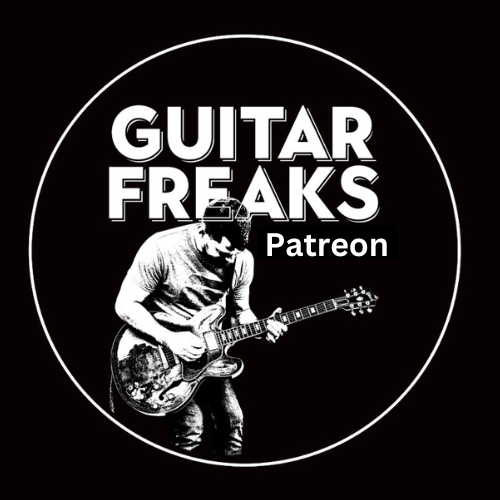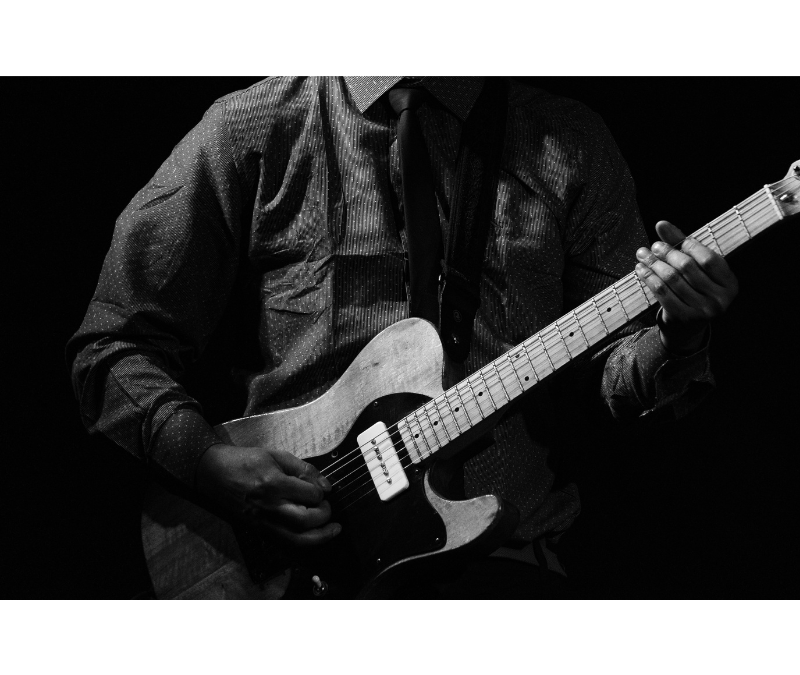Introduction
If you’ve been exploring the world of guitar chords, you may have encountered the chord known as Cadd9. It’s a beautiful, open-sounding chord often used in various music genres to add color and depth. This blog post will guide you through understanding the guitar chord Cadd9, how to play it, its use in chord progressions, and why it’s such a valuable chord for any guitarist. We’ll break down everything you need to know, using the keyword “guitar chord Cadd9,” to ensure you grasp this versatile chord’s nuances.
What is the Cadd9 Chord?
The Cadd9 chord is a variation of the standard C major chord. It adds the ninth note of the C major scale, which is the note D, to the chord. This addition provides a richer, more complex sound compared to the basic C major chord. The term “add9” refers to adding the ninth degree of the scale without altering the seventh degree, making it different from C9 chords, which include a flattened seventh.
To break it down, the notes in a standard C major chord are:
- C (root)
- E (major third)
- G (perfect fifth)
By adding the D note, we get the Cadd9 chord:
- C (root)
- E (major third)
- G (perfect fifth)
- D (ninth)
This simple addition transforms the chord into something more lush and resonant.

❌ Stop Guessing. Start Shredding.
If you’re still fumbling through scale patterns and box shapes… it’s costing you progress.
FretDeck™ is the no-fluff system that shows you exactly how to master the fretboard—fast. Early access.
⚡️ This isn’t for dabblers. It’s for players who want results.
👉 Click here to join the pre-launch now
Early access. Limited rewards. Don’t wait.
How to Play the Guitar Chord Cadd9 (with Diagrams + Progressions)
The guitar chord Cadd9 is one of the most beautiful-sounding chords on the guitar — and surprisingly easy to play. In this guide, we’ll break down how to play it, why it works, and how to use it in progressions.
- Place your ring finger on the 3rd fret of the A string (5th string). This is the C note, the root of the chord.
- Place your middle finger on the 2nd fret of the D string (4th string). This is the E note, the major third.
- Leave the G string (3rd string) open. This gives you the G note, the perfect fifth.
- Place your index finger on the 1st fret of the B string (2nd string). This produces the D note, which is the added ninth.
- Leave the high E string (1st string) open. This enhances the sound of the chord, making it more open and jangly.
When you strum from the A string down to the high E string, you should hear a full, rich sound that’s the hallmark of the Cadd9 chord. Make sure to avoid playing the low E string (6th string) to maintain the clarity of the chord.
Why Use the Cadd9 Chord?
The Cadd9 chord is favored by many guitarists because of its bright and uplifting sound. It creates a sense of openness and is often used in place of the standard C major chord to add more flavor and variation. This chord is commonly found in pop, rock, country, and folk music, among other genres. Its sound is both familiar and fresh, which is why it’s often employed to breathe new life into classic chord progressions.
The Cadd9 chord is also relatively easy to transition into and out of, making it an excellent choice for beginners learning to move between chords. Its structure is similar to that of the G major chord, which we’ll discuss in more detail when we look at chord progressions.
Chord Progressions with Cadd9
Understanding how to integrate the Cadd9 chord into your playing can open up a world of possibilities. Let’s look at some common chord progressions that use the Cadd9 chord and explore why they sound so compelling.
- G – D – Em – Cadd9This progression is a classic in pop and rock music. The transition from G to Cadd9 is smooth because both chords share similar fingerings and notes. The progression creates a sense of movement and anticipation, with the Cadd9 providing a nice resolution after the more melancholic Em chord.
- Cadd9 – G – D – Cadd9This progression is frequently used in folk and country music. It creates a rolling, continuous feel that’s perfect for storytelling songs. The repetition of the Cadd9 chord bookends the progression, giving it a cohesive feel while the G and D chords add variation.
- D – Cadd9 – G – DHere, the Cadd9 chord serves as a bridge between the D and G chords. This progression is effective in creating a flowing, melodic sequence that’s ideal for ballads and softer rock songs. The Cadd9 chord adds a bright contrast to the D chord and leads smoothly into the G chord.
- Am – G – Cadd9 – FThis progression has a more emotional, introspective feel. The move from G to Cadd9 is seamless, while the Am and F chords add a touch of melancholy. This combination is often used in slower, more reflective pieces.
- Cadd9 – Am – F – GThis progression builds tension and then resolves it. Starting with the Cadd9 chord sets a hopeful tone, while the Am and F chords introduce a minor feel that’s resolved by the G chord. This creates a satisfying musical narrative.
🎶 Songs That Use the Cadd9 Chord
The Cadd9 chord shows up in countless iconic acoustic and pop songs. Here are a few standout tracks where this chord adds emotion, color, and movement:
-
“Good Riddance (Time of Your Life)” – Green Day
A classic example of G – Cadd9 movement. The chord gives the verses their reflective, open sound.
🔗 Watch on YouTube -
“Wonderwall” – Oasis
A signature use of suspended and add9 chords. Cadd9 rings beautifully throughout the progression.
🔗 Watch on YouTube -
“Every Rose Has Its Thorn” – Poison
Uses Cadd9 to add a warm, bittersweet tone during acoustic ballad moments.
🔗 Watch on YouTube -
“Photograph” – Nickelback
Cadd9 helps shape the nostalgic, melodic guitar progression in the intro and verses.
🔗 Watch on YouTube -
“She Talks to Angels” – The Black Crowes
This acoustic-driven song uses open chord voicings like Cadd9 to create a haunting, expressive sound.
🔗 Watch on YouTube
Tips for Practicing the Cadd9 Chord
Mastering the Cadd9 chord requires practice, but with a few tips, you can integrate it into your playing more easily:
- Practice Transitions: Focus on transitioning between Cadd9 and other chords like G, D, and Em. These are common chords that frequently appear alongside Cadd9 in progressions.
- Use a Metronome: Timing is crucial when transitioning between chords. Use a metronome to keep your timing consistent as you practice switching to and from the Cadd9 chord.
- Play Along with Songs: Find songs that use the Cadd9 chord and play along. This not only helps with recognizing the chord in different contexts but also with internalizing its sound and feel.
- Experiment with Strumming Patterns: Try different strumming patterns while playing the Cadd9 chord to see how it fits within various rhythmic contexts. This will help you get a feel for the chord’s versatility.
Adding Cadd9 to Your Songwriting
If you’re a songwriter, incorporating the Cadd9 chord into your compositions can add a new dimension to your music. Its bright, uplifting sound makes it ideal for choruses and bridges, providing a lift and contrast to other, more standard chords.
Here are a few ideas for using the Cadd9 chord in your songwriting:
- Chorus Highlight: Use the Cadd9 chord in your chorus to create a sense of lift and resolution. Its open sound is perfect for highlighting the emotional peak of a song.
- Bridge Builder: The Cadd9 chord can act as a bridge between different parts of your song, connecting verses to choruses or leading into a key change.
- Emotional Undercurrent: Use the Cadd9 chord in ballads or slower songs to add an emotional undercurrent. Its sound is both uplifting and reflective, making it perfect for songs that deal with complex emotions.
Conclusion
The guitar chord Cadd9 is a powerful tool for guitarists of all levels. Its lush, open sound and versatility make it a valuable addition to your chord repertoire. Whether you’re a beginner looking to expand your chord knowledge or a seasoned player seeking to add more color to your playing, the Cadd9 chord offers a wealth of musical possibilities.
By understanding how to play the Cadd9 chord, incorporating it into various chord progressions, and experimenting with its use in different genres, you can enhance your playing and songwriting. The next time you’re strumming away on your guitar, try substituting a C major chord with a Cadd9 and listen to how it transforms the sound. This simple change can open up new worlds of musical creativity and expression.
Your guitar triads post (triadic breakdown of Cadd9)
❓ Frequently Asked Questions About the Cadd9 Guitar Chord
What does the “add9” mean in Cadd9?
The “add9” in Cadd9 means you’re adding the 9th note of the C major scale — a D note — to a regular C major chord. Unlike a C9 chord (which includes a flattened 7th), Cadd9 has no 7th — just the added 9th, creating a bright, open sound.
What notes are in a Cadd9 chord?
A Cadd9 chord includes the notes:
– C (root)
– E (major 3rd)
– G (perfect 5th)
– D (added 9th)
This gives it a rich, suspended quality that’s perfect for acoustic rhythm playing.
Is Cadd9 the same as C9?
No. Cadd9 and C9 are very different:
– Cadd9 = C major + added 9th (no 7th)
– C9 = C dominant 7 (C, E, G, Bb) + 9th (D)
Cadd9 is common in pop and acoustic music, while C9 is often used in funk, jazz, and blues.
When should I use the Cadd9 chord?
Use Cadd9 when you want a brighter, more emotional version of C major. It works beautifully:
– In chord progressions like G – D – Em – Cadd9
– As a substitute for C major in modern acoustic or pop songs
– To voice-lead smoothly from G major or D/F♯
What are some songs that use Cadd9?
Many iconic songs use Cadd9 for its rich tone. A few examples:
– “Good Riddance (Time of Your Life)” – Green Day
– “Wonderwall” – Oasis
– “Every Rose Has Its Thorn” – Poison
These songs use the Cadd9 chord to add emotion and harmonic color.
Can I use Cadd9 instead of C major?
Yes, in many cases. Cadd9 can replace C major when:
– You want a more open, layered sound
– You’re playing fingerstyle or acoustic rhythm
– You’re following modern chord voicings common in singer-songwriter music
Just make sure the 9th (D) doesn’t clash with melody or lead lines.

🎸 Join the Guitar Freaks Patreon!
Get SoloCraft E-Book FREE!
Join Guitar Freaks on Patreon and instantly unlock my full e-book SoloCraft—your step-by-step guide to fretboard mastery and crafting soulful solos.
New video lesson drops every Friday so you’ve always got a fresh, focused practice plan for the week.
👉 Don’t miss out—join now and grab your free copy!










